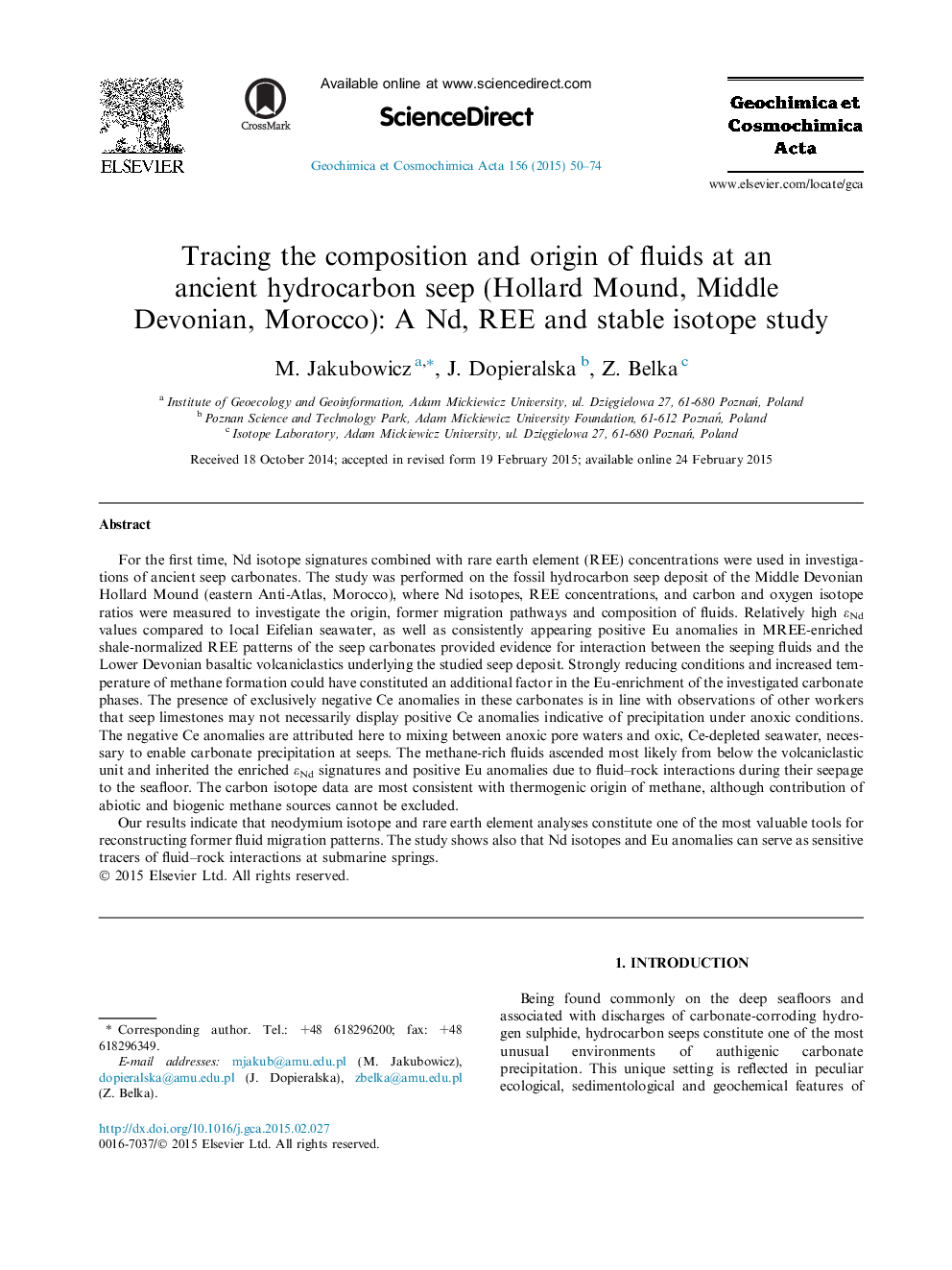| کد مقاله | کد نشریه | سال انتشار | مقاله انگلیسی | نسخه تمام متن |
|---|---|---|---|---|
| 4701940 | 1638001 | 2015 | 25 صفحه PDF | دانلود رایگان |

For the first time, Nd isotope signatures combined with rare earth element (REE) concentrations were used in investigations of ancient seep carbonates. The study was performed on the fossil hydrocarbon seep deposit of the Middle Devonian Hollard Mound (eastern Anti-Atlas, Morocco), where Nd isotopes, REE concentrations, and carbon and oxygen isotope ratios were measured to investigate the origin, former migration pathways and composition of fluids. Relatively high εNd values compared to local Eifelian seawater, as well as consistently appearing positive Eu anomalies in MREE-enriched shale-normalized REE patterns of the seep carbonates provided evidence for interaction between the seeping fluids and the Lower Devonian basaltic volcaniclastics underlying the studied seep deposit. Strongly reducing conditions and increased temperature of methane formation could have constituted an additional factor in the Eu-enrichment of the investigated carbonate phases. The presence of exclusively negative Ce anomalies in these carbonates is in line with observations of other workers that seep limestones may not necessarily display positive Ce anomalies indicative of precipitation under anoxic conditions. The negative Ce anomalies are attributed here to mixing between anoxic pore waters and oxic, Ce-depleted seawater, necessary to enable carbonate precipitation at seeps. The methane-rich fluids ascended most likely from below the volcaniclastic unit and inherited the enriched εNd signatures and positive Eu anomalies due to fluid–rock interactions during their seepage to the seafloor. The carbon isotope data are most consistent with thermogenic origin of methane, although contribution of abiotic and biogenic methane sources cannot be excluded.Our results indicate that neodymium isotope and rare earth element analyses constitute one of the most valuable tools for reconstructing former fluid migration patterns. The study shows also that Nd isotopes and Eu anomalies can serve as sensitive tracers of fluid–rock interactions at submarine springs.
Journal: Geochimica et Cosmochimica Acta - Volume 156, 1 May 2015, Pages 50–74